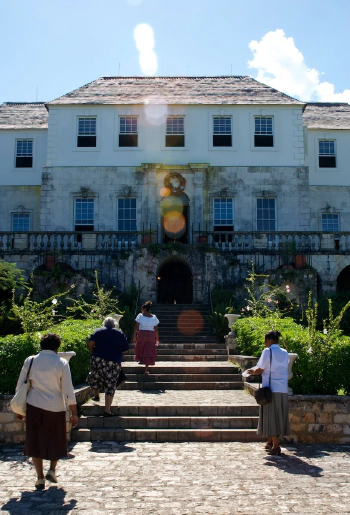
Why Great Houses?
I haven’t spoken about what prompted the initial consideration of Great Houses and heritage sites as an area for visual exploration. As a person of Jamaican-African heritage, I have spent much time on the island of Jamaica.
Some years ago, in 2007, I attended a friends wedding held at the Bellefield Great House in Montego Bay. I acted as the unofficial photographer for the day, taking candid shots of the guests and the splendid setting in which the wedding was taking place.
As I was waiting for the bridal party to finish their wedding rehearsal, I wandered around the grounds, speaking to workers who were constructing the marquee.
They told me that the family who owns Bellefield Great House are descendants of the same Kerr family that owned the estate back in the slave era. I haven’t confirmed this information to be correct; however, the information prompted me to view the site differently.
I looked at my surroundings for the first time and connected the place with the trade that enslaved my African ancestors. The Great House and the well-manicured gardens, the Sugar Mill (now a two-tiered restaurant), the back lawn all very picturesque, very tranquil now, but back 300 years ago, it would have been a very different place.
However, these musings would not have been enough to prompt a deeper look at the world of the Great House and their thousand-plus acre plantations as most were back in the day. Before leaving the estate, an incident made me think about Great Houses as a site for further investigation. While the bridal party trickled back to the vehicles that would carry us back to our hotel, some of the children there ran down and began playing in the Sugar Mill area.
Three to four of the mothers went to collect their children, and I went with them. Once on the lower level, we all walked into the lower floor area of the Sugar Mill. It was dark, quiet and had an eerie feel about it. Almost at the same time, all of us collectively shuddered, looked at each other and beat a hasty retreat - children in tow - back to the upper level (ground level), got in the vehicles and left.
I cannot speak for the others, but for myself, my thoughts on the drive back to the hotel circled the people who would have been working on the plantation in the sugar mill. They would have had no choice in the work they were doing; they did not get paid. They were not free to come and go as they pleased on the estate, unlike us, who, as consumers, came back to eat and party in a place where earlier generations endured such pain and hardship.
On my return to the UK, I looked at the images I made and the subsequent wedding day. Finally, I decided, perhaps the subject of the Plantation and the Great Houses that adorn them would be worthy of further research and investigation.
The images I made may only serve as the foundations for this project. However, one needs to start somewhere, and I think this is as good a place as any.

